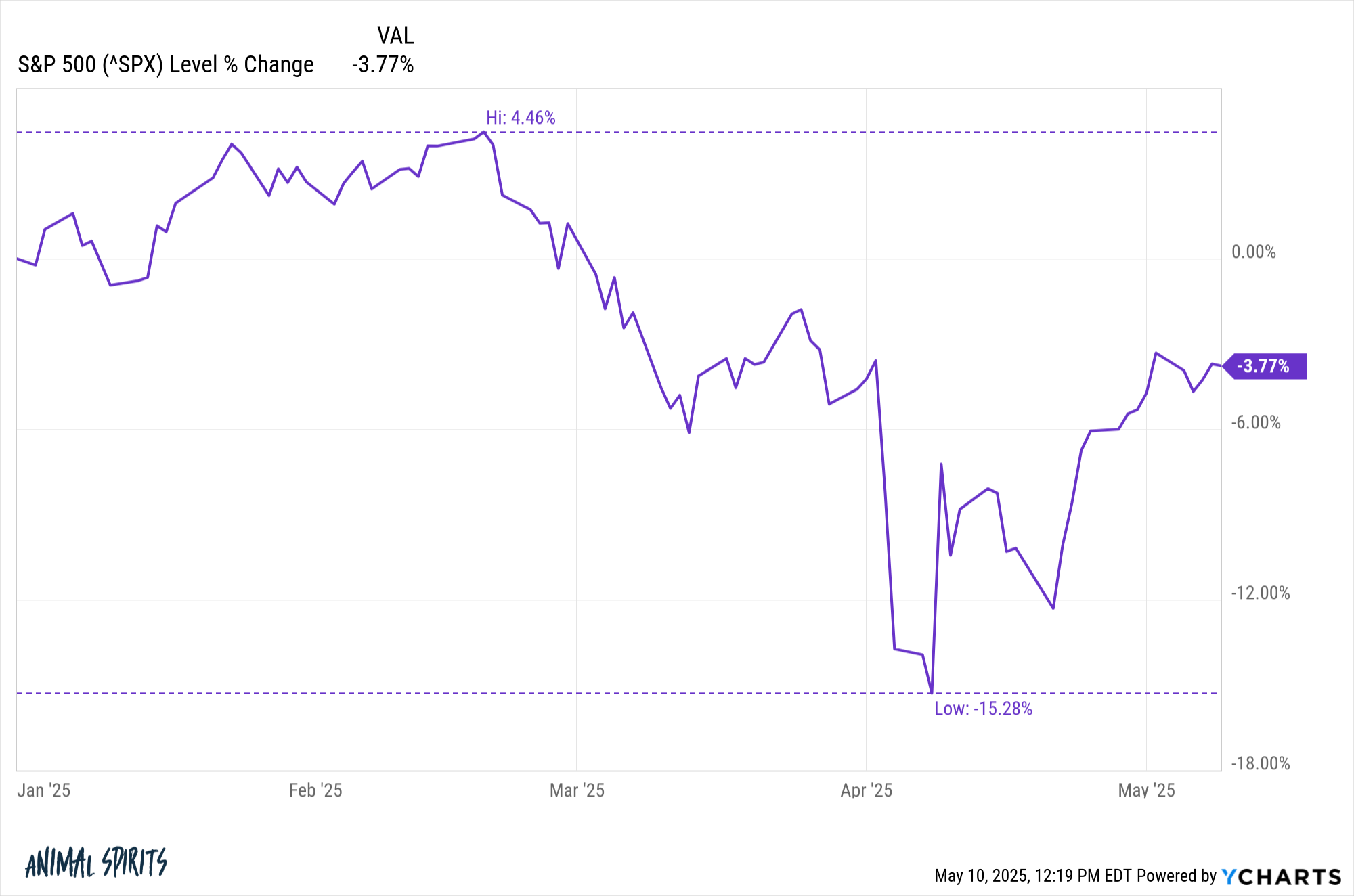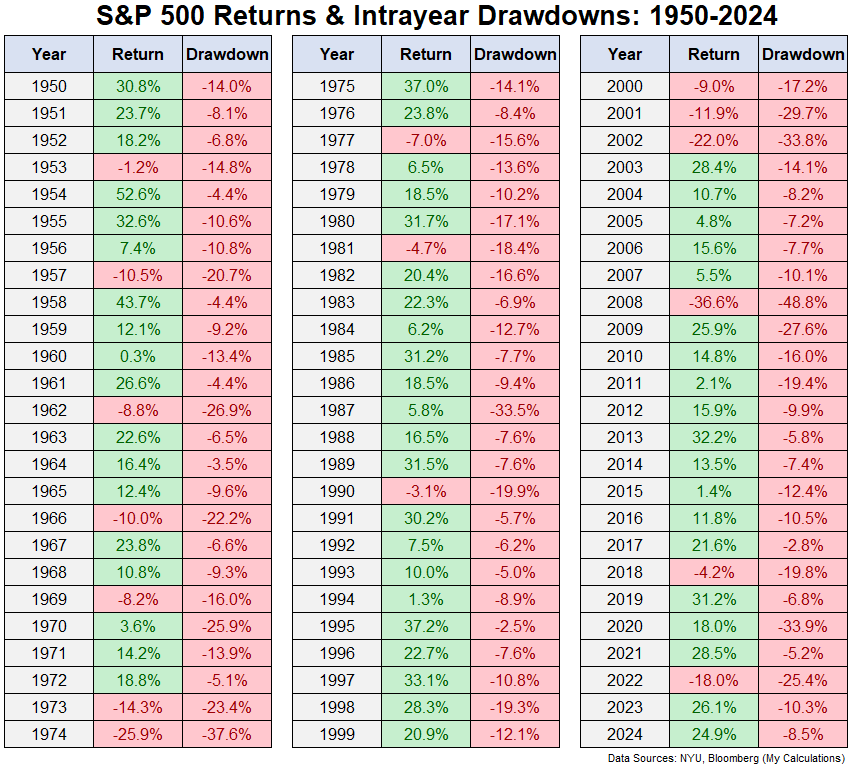It’s been a wild ride in the stock market this year:

The S&P 500 was up around 5% on the year through mid-February. It was more or less straight down from there.
By the end of the first week in April the market was down more than 15%, good enough for a drawdown of 18.9% from peak to trough.
Now stocks are up nearly 14% from the lows and down less than 4% on the year.
This is a classic puke and rally, which happens more often than you’d think.
This is annual S&P 500 returns along with the intra-year peak-to-trough drawdowns:

This is a decent encapsulation of risk and reward. There can be green even when the red is pretty bad although sometimes the red ends in red.
Consider the fact that there have been 41 years with a double-digit drawdown at some point since 1950.1
There are obviously years when a drawdown leads to a poor outcome. In 16 of those 41 downdrafts, the S&P 500 finished the year down. Eight of those years were down double-digits.
That’s risk.
Now comes the interesting part. The market is often down but not out. We’ve had plenty of puke and rally situations.
In those 41 years with a double-digit drawdown at some point during the year, the market finished with a gain 25 times or 61% of the time.
That’s an amazing win rate during years with a correction.
And of those 25 years with double-digit drawdowns that finished in the black, 16 times the market ended the year with double-digit gains.
Think about these numbers.
Years in which there is a correction of 10% or worse are more likely to finish the year with gains than losses. And the stock market also finished with way more double-digit gains than double-digit losses.
Corrections can be painful but they are not always the end of the world.
It’s often very difficult to separate the reason for the correction from the correction itself. This one feels different because of the trade war and all of the uncertainty it has introduced.
But from a purely market history standpoint, the action in the stock market this year is perfectly normal.
Of course the year is not over.
The market could fall out of bed again.
There have been instances when the stock market goes down, recovers, then goes back down again all in the same year.
The last time this happened was 2018. The stock market fell 10% early in the year, bounced back and then dropped 20% through Christmas Eve.
Ironically enough, that downturn occurred during the last trade war.
In some ways it feels like the stock market is always surprising us. In other ways, it feels like the stock market is constantly repeating itself for different reasons.
It does feel comforting to know the puke and rally is perfectly normal.
The hard part is not knowing if and when the market will get sick again.
Further Reading:
Buying When the Stock Market is Down 15%
142 if you count 2025. I didn’t include this year because the year is not over yet.
This content, which contains security-related opinions and/or information, is provided for informational purposes only and should not be relied upon in any manner as professional advice, or an endorsement of any practices, products or services. There can be no guarantees or assurances that the views expressed here will be applicable for any particular facts or circumstances, and should not be relied upon in any manner. You should consult your own advisers as to legal, business, tax, and other related matters concerning any investment.
The commentary in this “post” (including any related blog, podcasts, videos, and social media) reflects the personal opinions, viewpoints, and analyses of the Ritholtz Wealth Management employees providing such comments, and should not be regarded the views of Ritholtz Wealth Management LLC. or its respective affiliates or as a description of advisory services provided by Ritholtz Wealth Management or performance returns of any Ritholtz Wealth Management Investments client.
References to any securities or digital assets, or performance data, are for illustrative purposes only and do not constitute an investment recommendation or offer to provide investment advisory services. Charts and graphs provided within are for informational purposes solely and should not be relied upon when making any investment decision. Past performance is not indicative of future results. The content speaks only as of the date indicated. Any projections, estimates, forecasts, targets, prospects, and/or opinions expressed in these materials are subject to change without notice and may differ or be contrary to opinions expressed by others.
The Compound Media, Inc., an affiliate of Ritholtz Wealth Management, receives payment from various entities for advertisements in affiliated podcasts, blogs and emails. Inclusion of such advertisements does not constitute or imply endorsement, sponsorship or recommendation thereof, or any affiliation therewith, by the Content Creator or by Ritholtz Wealth Management or any of its employees. Investments in securities involve the risk of loss. For additional advertisement disclaimers see here: https://www.ritholtzwealth.com/advertising-disclaimers
Please see disclosures here.








